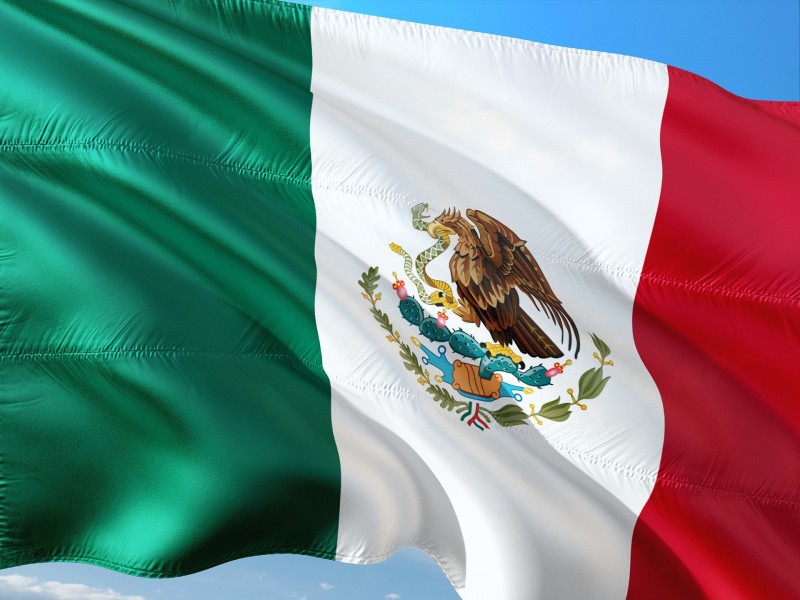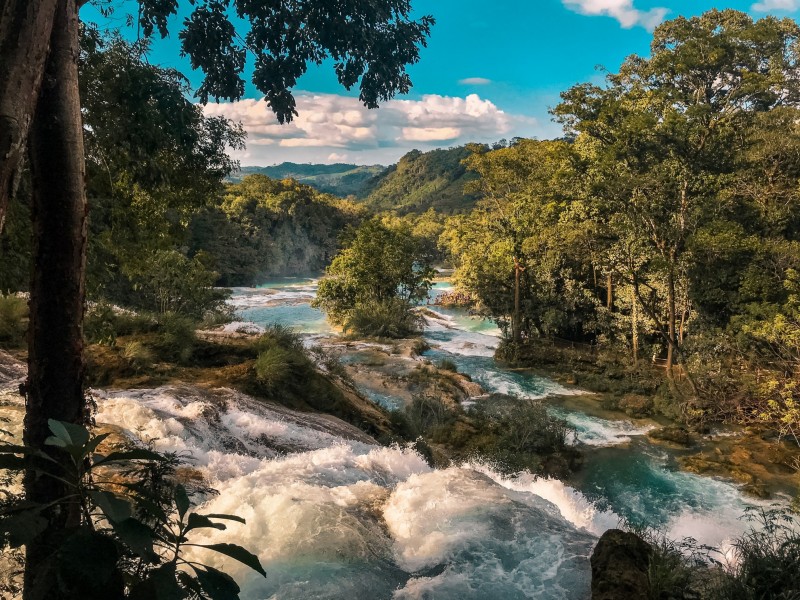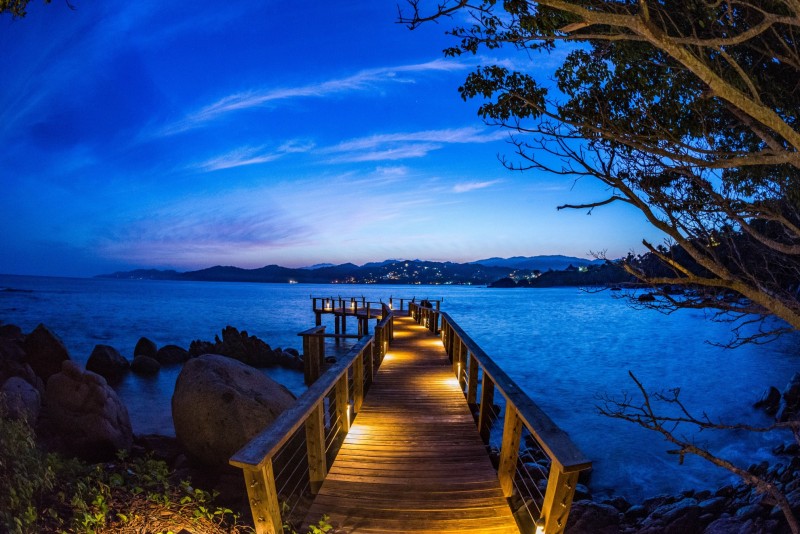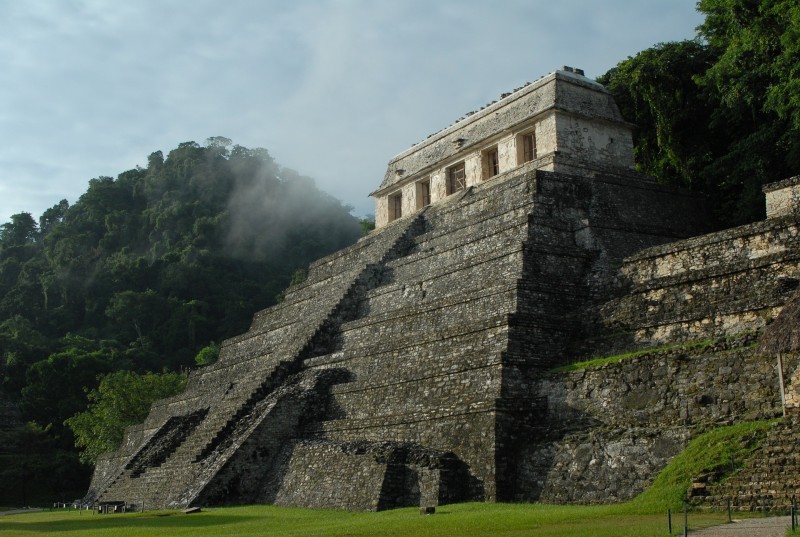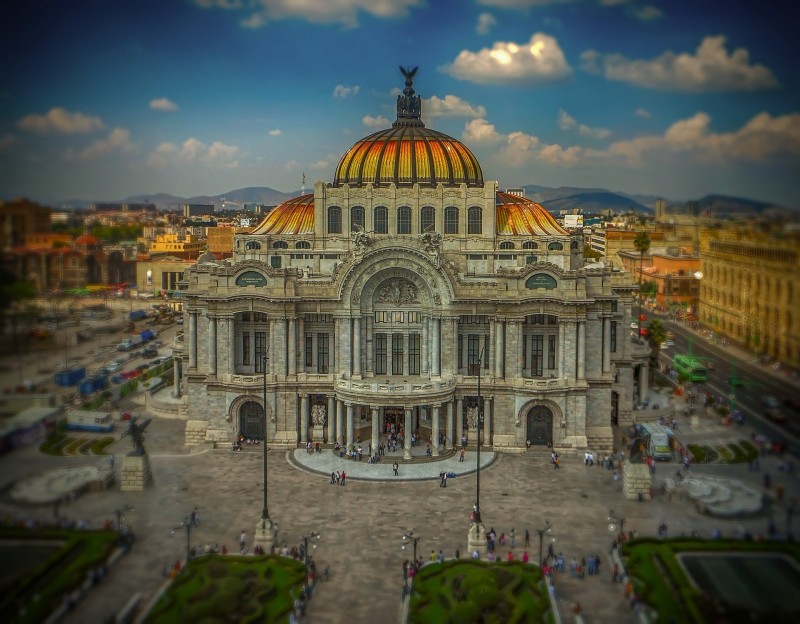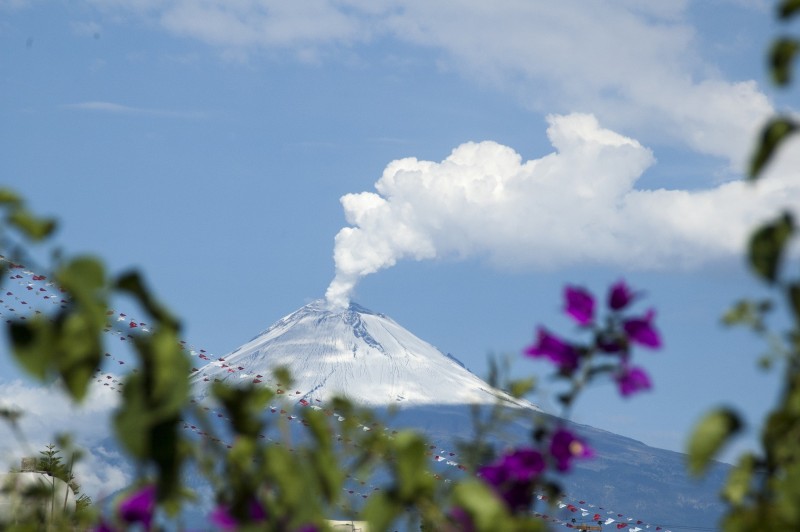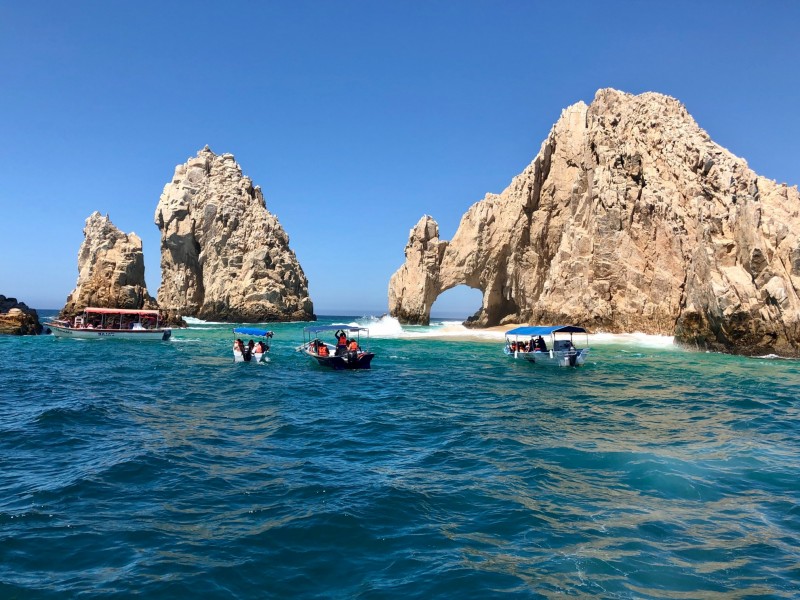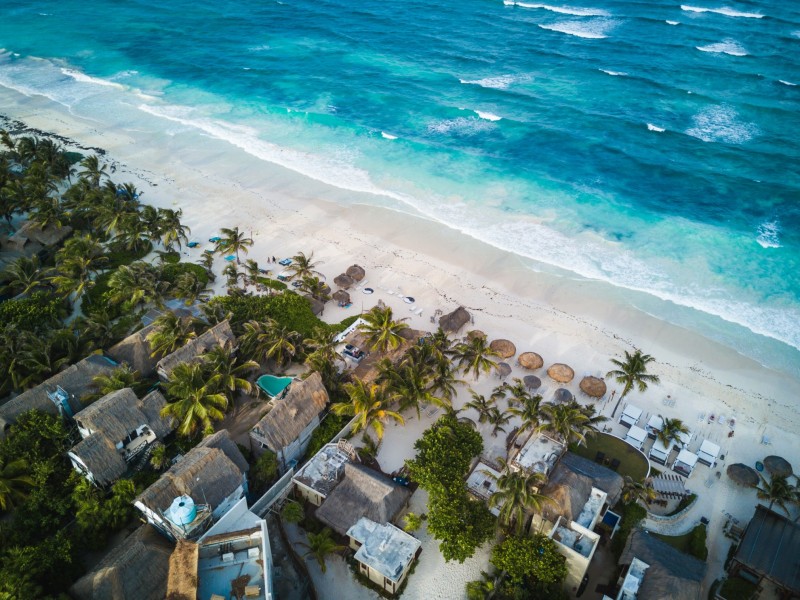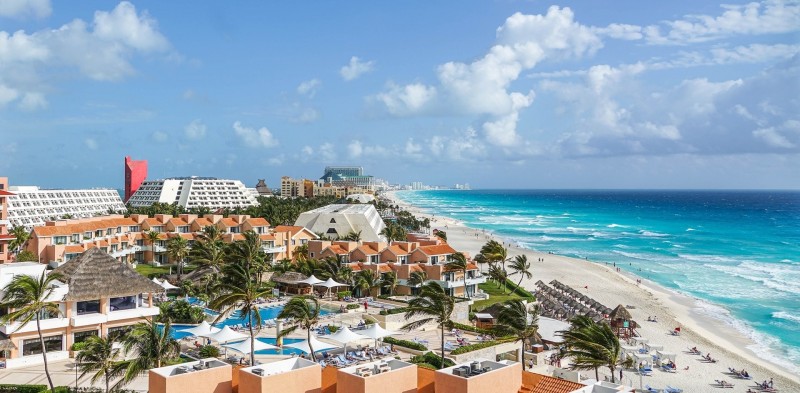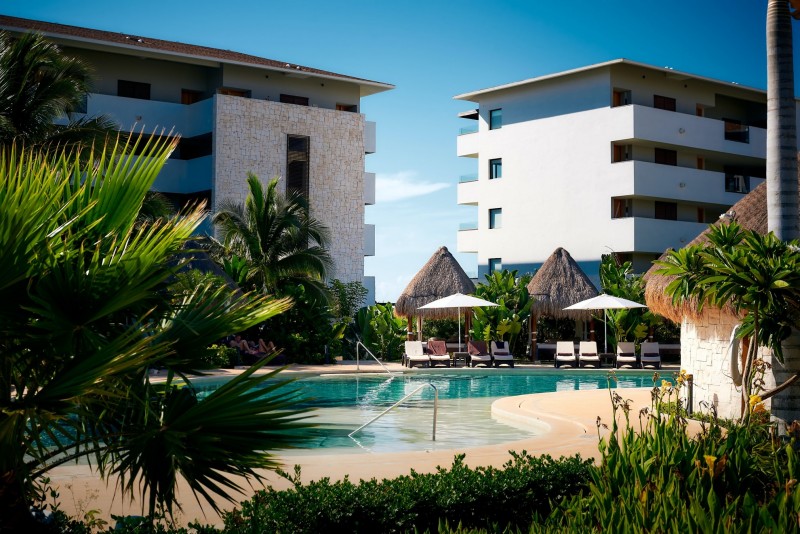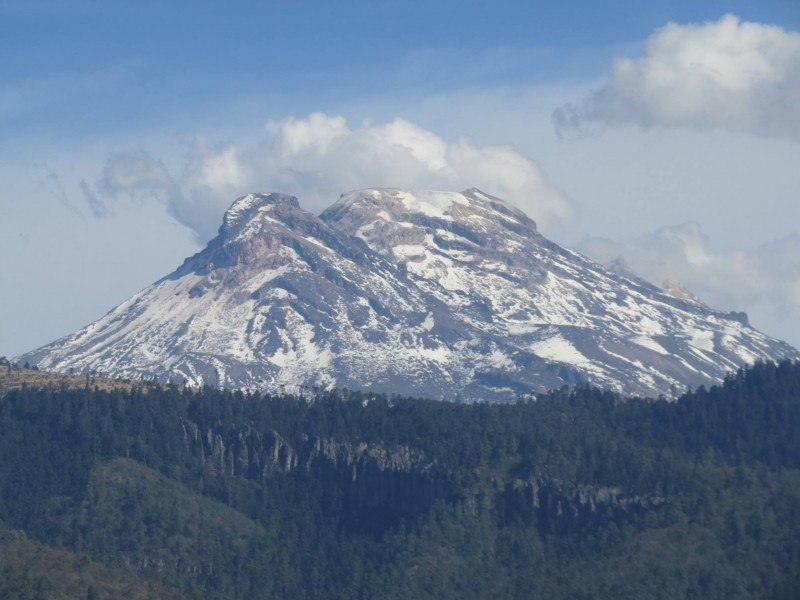Mexico
Mexico
Capital city description
Mexico City sits atop a highland valley at nearly 7,392 feet above sea level. Along the city's southeast side are two volcanoes: Popocatepetl and Iztaccihuatl. The weather is warm, with an average temperature of 72 degrees Fahrenheit. There are various cultural events and museums in the city, including the National Museum of Anthropology and the National History Museum.
The world's biggest Spanish-speaking city, Mexico City, serves as the capital for Mexico, formally called the United Mexican States.
Mexico City ranked among the bottom 5 in the world among cities demonstrating technology readiness and the ten (10) laggards in terms of health, safety, and security according to PwC's 2018 Cities of Opportunity Index.
Nevertheless, Mexico City's economic prowess is supported by the fact that 17 of the Fortune Global 500 companies have their headquarters located in the capital, including crude oil behemoth Pemex and telecommunications giant América Móvil.
In international trade, Mexico has risen to become the world's top 10 exporting nation, shipping US$472.3 billion worth of goods around the globe in 2019. The highest-value products exported from Mexico are cars (about 11% of its global total), computers (7%), automotive parts and accessories (6.5%), trucks (5.5%), and crude oil (4.8%).
Mexico City is also a world leader in having the most museums of any city via its roughly 200 museums. Happily, many of Mexico City's museums are free on Sundays.
In addition, Mexico City boasts the most IMAX theaters among all cities worldwide and is where the greatest number of Americans reside outside the United States
Climate
November to May (dry season)
June to October (rainy season)
At 2,300 meters (7,546 ft), Mexico City (primarily subtropical highland climate) has a yearly median temperature of 15 °C (59 °F) with pleasant summers and mild winters.
Average daily highs and lows for May, the warmest month, are 26 and 12 °C (78.8 and 53.6 °F), and average daily highs and lows for January, the coldest month, are 19 and 6 °C (66.2 and 42.8 °F).
Languages spoken
The major language of Mexico is Spanish
Some of the most widely spoken languages in Mexico, aside from Spanish, are Nahuatl, which has more than 1.7 million speakers; Maya, spoken by around 850,000 people; and Mixtec, with more than half a million speakers.
Fun/Fascinating Facts
1.Mexico has 59 varieties of indigenous corn, a wild form of the same teosinte species.
2. Chocolate comes from Mexico, as the cacao plants were first found in ancient Mesoamerica (present-day Mexico). The Olmec, the earliest civilizations in Mexico, drank the chocolate during rituals and used it as medicine.
3. 68 languages are spoken in Mexico, 63 of which are indigenous. Of the indigenous languages spoken in Mexico, Nahuatl and Maya are the most widely used.
4. A surprising fact that most people don’t know about is that Mexico is home to the world’s largest pyramid, the Great Pyramid of Cholula. Also known as Tlachihualtepetl, the pyramid is located in an archaeological site in San Andrés Cholula, and it was originally constructed over 2000 years ago.
5.Mexico City is sinking every year because 70 percent of the water people rely on has been pumped out from the aquifer beneath the city.
Unique Customs/Traditions
TRADITIONAL MUSIC
The Aztecs, Mayas, and Iberian cultures have all influenced the culture of Mexico. Music has played an important part, and with Spain has colonized Mexico for about 300 years, their influence is a part of the country's musical tradition. Traditional music is not only one of the customs of Mexico but also an identity for each region of the country, which makes for a diverse and fascinating part of its history. One of the most popular and easily recognizable sounds is that of the Mariachi that originated in the state of Jalisco.
WEDDING TRADITIONS
One of the traditions associated with a wedding in Mexico is the priest giving thirteen gold coins to the groom, who then offers them to his bride. This Mexican custom represents Jesus Christ and his twelve apostles and symbolizes the willingness of the groom and his capability to care for his future wife during their marriage. It is also one of the traditions of Mexico that Godparents are part of a marriage ceremony and give the couple a Bible and a rosary. They are the sponsors of the wedding and the benefactors of the bride and groom.
DAY OF THE DEAD - DÍA DE LOS MUERTOS
One of the most well-known Mexican customs is the Day of the Dead (Día de Los Muertos). Celebrated between 31 October and 2 November, it is when the deceased are honored with a festive and colorful occasion. Families visit the decorated graves of their relatives and friends to say prayers and offer gifts for their souls, and in their homes, they erect decorated altars (ofrendas) as a welcome to the spirits.
CINCO DE MAYO
One of the most important dates in Mexican culture celebrates the victory by Mexico over France in 1862 at the battle of Puebla. The celebrations help the youth understand the importance of this day and its significance for Mexico.
CHRISTMAS IN MEXICO
The Christmas customs of Mexico remain vital to the catholic roots. The La Posada begins on the 16th and happens every day up to Christmas Eve. A procession carries a baby Jesus to the nativity scene in the local church or elaborate scenes in people's homes in a re-enactment of Mary and Joseph's search for shelter in Bethlehem. Traditionally, lullabies are sung for the newborn Jesus at the midnight mass during this period known as the 'La Misa Del Gallo and are the time the baby Jesus is added to the crib in the nativity scene. Gifts are presented to the children on the 6 January - Three Kings Day (Dia de Los Reyes).
THE SIESTA
Among the diverse and ancient traditions of Mexico are those that have either been forgotten or phased out. Among the latter is the popular custom of Mexico known as the "Siesta." Shops are closed for a few hours during the afternoon to allow their owners and employees a period of rest. Although, because of the increasing pace of life in the urban areas, this custom is declining, in the villages and rural locations, the Siesta is one of the old customs of Mexico that still prevails.
THE BULLFIGHT
Although classified as an illegal sport in many other countries, there is still bullfighting in Mexico. Inherited from Spain, it is one of the popular traditions of Mexico and attracts varied and large audiences to the arenas.
THE PINATA
These days, piñatas are a familiar sight at many a party. This most delightful aspect of Mexican culture has been adopted around the world. The piñata can be a pot made of clay, which is filled with fruit, sweets, and confetti, or it can be an elaborately fashioned paper creation – often in the shape of a donkey. They have colorful decorations of tinsel, ribbons, and paper, with a rope attached. The piñata is hung up, and children blindfolded then try to break it open to reap the rewards from inside. You won't find many adults turning down the chance of a swing at it either.
Popular universities
| Name | Description | |
|---|---|---|
| Universidad Nacional Autónoma de México (UNAM) | 113th in the world rankings and first in the Mexico University Rankings. UNAM is a public university that has a huge student population of around 346,730, spread across a number of campuses in Mexico City and beyond, including 30,300 postgraduates. In 2007, UNAM’s main campus, which was built as a collaborative architectural design project between 1949 and 1952, became one of Mexico’s 31 UNESCO Heritage Sites. The campus, which combines elements of 20th-century modernism and traditional Mexican culture, has been praised by UNESCO as a fitting tribute to the country’s progress since the revolution of 1910-20, and to the importance of education. | |
| Tecnológico de Monterrey | Continuing to improve its position in this year’s world rankings thanks to considerable international growth is the Tec de Monterrey. This private institution is now ranked 178th globally and second in the Mexico ranking. Although the school’s population of 91,200 is divided across 31 campuses throughout Mexico, Tec de Monterrey’s main campus is based in Monterrey, a city with the highest income per capita in Mexico, which acts as an important industrial and business center for the nation. The Tecnológico de Monterrey also offers a number of undergraduate classes taught in English. These are for international students studying for a semester or year abroad and can provide credits towards a degree at the student’s home university. | |
| Instituto Politécnico Nacional (IPN) | Like the Universidad Nacional Autónoma de México, the Instituto Politectino Nacional (IPN) is also a very large public university, with just under 150,000 students currently enrolled. Ranked third in the Mexico ranking and 651-700 in the world rankings, IPN’s main campus is situated two kilometers north of Mexico City. The school is a world leader in 10 disciplines covered by the QS World University Rankings by Subject, including computer science, mechanical engineering, and physics. | |
| Universidad Anáhuac Mexico | With more than 50 years of experience, we in the Universidad Anahuac Mexico pursue the development of integral people with an entrepreneurial, innovative, and globalized vision that transcends through their commitment to others, positively transforming the society. Universidad Anáhuac México is in the top 3 places of de QS ranking for México. We pursue integral people with an entrepreneurial vision, innovative and globalized, that transcend because of their commitment to others, positively transforming the society. With two campuses, the main one at the west edge of Mexico City and another at the southernmost part, we offer 45 Bachelor's degrees, 16 doctoral programs, 53 masters, and various Certificate Diplomas, Workshops, and Courses. The academic disciplines core of our programs in Health Sciences, Legal and Social sciences, Communication, Architecture, Design and Arts, Engineering, Business, and Tourism. | |
| Instituto Tecnologico Autonomo de Mexico | ITAM’s undergraduate programs offer internationally rigorous research and academic standards which attract the most competitive students and professors in Mexico. With an average ratio of full-time faculty to the student of 22-to-one, all ITAM undergraduate programs offer an intellectually challenging curriculum, ensuring the international competitiveness of our graduates in their field of study. At the same time, all programs share common core subjects, which provide the interdisciplinary and humanistic foundation needed for success in the challenges awaiting future generations.ITAM offers undergraduate degrees in Accounting, Actuarial Science, Applied Mathematics, Business Administration, Computer Engineering, Economics, Financial Management, Industrial Engineering, International Relations, Law, Mechatronics Engineering, Political Science, and Telecommunications Engineering. ITAM’s flexible curriculum and extensive offer of subjects each semester also allow students to combine these programs to receive a second undergraduate degree with an average of two semesters of additional study. | |
| Universidad Iberoamerican | In its Mexico-City campus, Universidad Iberoamericana (IBERO) is acknowledged as one of Mexico's top private educational institutions, widely known in Mexico and abroad for the high quality of its study programs. IBERO's underlying aim is to safeguard, disseminate and improve higher education by training the professionals, teachers, researchers, and technicians our society needs. At present, it offers: 36 bachelor's-degree and 44 graduate-degree programs (28 master degrees, 11 doctorates, and 5 specializations), most of which are certified either in Mexico or abroad, including several granted by Mexico's National Council for Science and Technology (CONACYT). Over 200 diplomas and other courses that provide training to companies, government institutions, and individuals. Established over 75 years ago, Universidad Iberoamericana (IBERO) is one of the nation's first private universities and the oldest Jesuit university. IBERO is an institution entrusted to the Society of Jesus, whose mission is to contribute to the achievement of a more free, solidary, just, inclusive, productive, and peaceful society through the development and spreading of knowledge and the formation of professionals and researchers with a high human and intellectual quality, internationally competent, committed to the greatest service to others, and inspired by authentic human, social and transcendent | |
| Universidad Atónoma Metropolitana | Universidad Atónoma Metropolitana is one of the best universities in Mexico and Latin America. UAM assumes its social responsibility and focuses its teaching, research, and cultural promotion to solve a social problems. UAM stands out for its innovative work and social commitment. UAM offers 82 undergraduate programs and 114 graduate programs and there are more than 59,000 undergraduate and graduate students annually. Of the 82 bachelor’s degree programs, 41 are accredited and/or assessed by an external agency. Of the 114 postgraduate degree programs, 82 (two specializations, 50 master’s and 30 Doctorate programs) are incorporated into the National Postgraduate Quality Program (PNPC) of the National Council of Science and Technology (CONACyT). The University promotes academic and research collaboration with both national and international Higher Education Institutions and Research Centers in different scientific areas, in order to enrich academic and professional training. UAM has more than 100 laboratories, workshops, and pilot plants for research and lecturing. | |
| Universidad Atónoma de Nuevo León | Ranked 53rd in Latin America in the 2016 edition of the QS World University Rankings by Region, Universidad Autónoma de Nuevo León is spread across seven campuses in the northern state of Nuevo León, Mexico. Home to the third-largest university population in Mexico, UANL also has an open-air stadium, center for research and development in food sciences, an aquatic center, and a successful American football team (the Tigres). | |
| Benemérita Universidad Autónoma de Puebla | The Benemérita Universidad Autónoma de Puebla is an autonomous public university that has achieved consolidation at the national level, committed to the integral capacitation and training of critical and reflexive professionals and citizens, at the levels of secondary school and higher education both undergraduate and graduate, who will have the capacity to generate, adapt, recreate, innovate and apply knowledge with quality and social relevance. The University fosters research and the creation and dissemination of knowledge, it promotes social inclusion, equal opportunities, and social outreach. It conforms to a community of knowledge and as such is pivotal in the development of art, culture, and the proposal of solutions to economic, environmental, social, and political problems of the region and of the country, under a policy that incorporates transparency and accountability, ethical principles, sustainable development, the defense of human rights, tolerance and honesty, thus contributing to the creation and development of a proactive, productive, just and safe society. The Benemérita Universidad Autónoma de Puebla is considered a leader among the Higher Education Institutions of the country and has a solid international standing. The quality and relevance of its academic programs and services are underpinned by the capacity and recognition achieved by its academic body, a relevant and flexible educational model which is focused on the student, its solid scientific and technological development, its influential role in culture and the arts, and academic structure organized around national and international cooperation and collaboration networks, an effective, functional, flexible and fully accredited administration which gives support to academic processes under a strict policy of transparency, accountability and sustainable development. | |
Festivals & Events
.jpg)
Fiesta de la Candelaria
Date: February
Thousands of people flock to the colonial riverside town of Tlacotalpan in early February to celebrate Candelaria (Candlemas), a religious celebration featuring a glorious image of the Virgin being floated down the river.
However, for many people, the real highlight is a simultaneous Son Jarocho music festival, a three-day romp showcasing traditional Veracruz-style music. Slap that donkey jawbone!

Festival de México
Date: March
Thousands of people flock to the Much like everything else in sprawling Mexico City, the scale of the Festival de México is enormous. Some 50 venues are scattered throughout the capital, staging top-notch national and international acts, including dance, music, theater, and opera.
Held in March or April, most of the action for the two-week event unfolds in the downtown Historical Center.
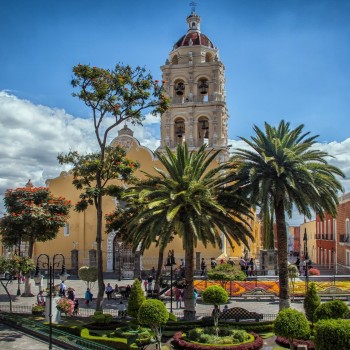
Festival Internacional Cervantino
Date: October
Guanajuato ranks among the crème-de-la-crème of Mexican colonial cities, and the Cervantino festival in October takes it to another level.
Once a relatively small festival dedicated to the works of Spanish novelist Miguel Cervantes of Don Quijote fame, the Cervantino has morphed into one of Latin America's foremost arts extravaganzas.
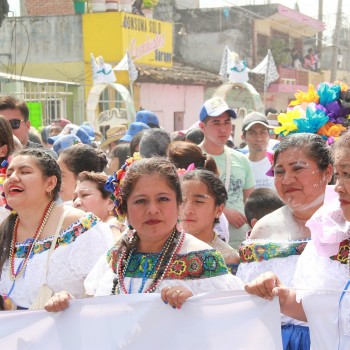
. Morelia International Film Festival
Date: October
The Morelia film fest brings this city to life come mid-October. Created as a platform for documentaries and first- and second-time fiction works, the programming offers an up-close look at Mexican society as seen through the eyes of a new generation of filmmakers.
Funky bars and sidewalk cafes are buzzing with activity around the main square, where crowds gather nightly for open-air screenings and other cultural events.
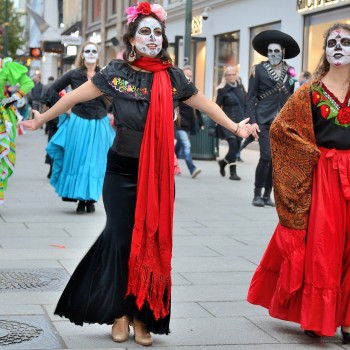
Día de Muertos (Day of the Dead)
Date: November 1-2
Each year on November 1 and 2, Mexico turns its thoughts to the departed during the Día de Muertos (Day of the Dead) festivities, a colorful tradition deeply rooted in indigenous culture.
For Mexicans, death is more a cause for celebration than mourning, and that spirit has been kept very much alive in Pátzcuaro, the Día de Muertos mecca. Prepare yourself to battle large crowds of the living.
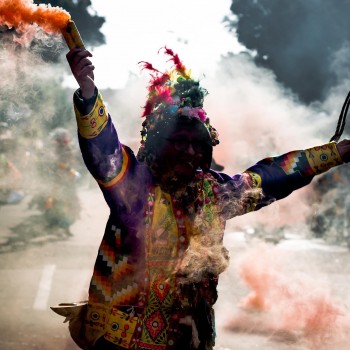
Carnaval in Veracruz & Mazatlán
Date: March
Mexico hosts numerous Carnaval celebrations every year featuring flamboyant parades, dance performances, live music, and of course, big-time partying. The nine-day event in Veracruz, Mexico's biggest Carnaval, usually kicks off in March, right around the same time that festivities get started on the Pacific coast in Mazatlán.
Take your pick: you can shake your hips to salsa music in Veracruz or get down to the brass band sounds of Mazatlán.
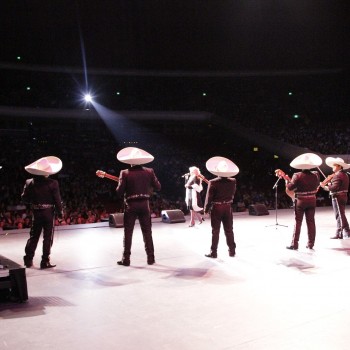
Guelaguetza Festival
Date: July
A Zapotec word meaning offering, the Guelaguetza Festival in Oaxaca City, showcases regional folkloric dance and music, keeping alive a tradition that has been handed down for centuries. Held in July, most of the events take place at a large amphitheater perched atop a hill.
For a more intimate experience, many surrounding towns host more miniature versions of the festival.
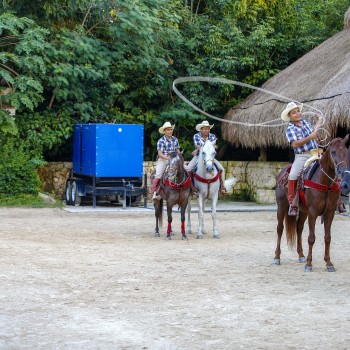
Fiestas de Octubre
Date: October
The odds are that if you've heard anything about Guadalajara, it probably has something to do with mariachis, tequila, or Mexican cowboy culture. You'll be happy to know that the city also has a non-traditional contemporary side.
Guadalajara, known for a vibrant independent music and arts scene, lets it all hang out in October at the month-long Fiestas de Octubre, which programs modern art shows and alternative rock gigs.
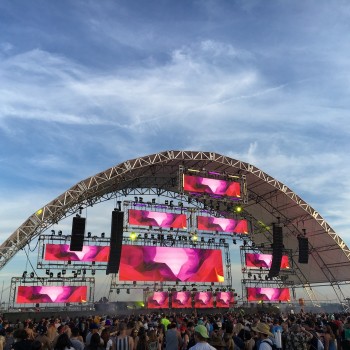
Fiesta de Santa Cecilia
Date: November 22
On November 22, an exceptional gathering took place in Mexico City's famed mariachi square to pay homage to St. Cecilia, the patron saint of musicians.
Mariachis, along with regional musicians from northern Mexico and the Gulf Coast state of Veracruz, descend on Plaza Garibaldi for a tribute concert and an open-air party that usually involves dance, drink, and song.
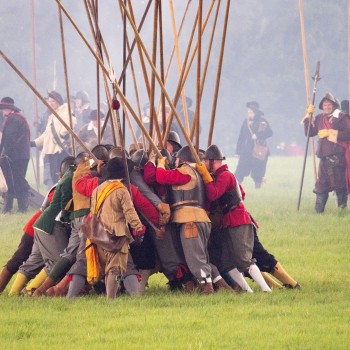
La Morisma
Date: August
As part of the festivities of La Morisma, usually held in late August, an all-out war erupts on the streets of colonial Zacatecas. OK, well, it's a mock battle with well over 2000 participants reenacting battles between the Christians and Moors in old Spain.
The faux soldiers attack one another while accompanied on the streets by bands of musicians, much to the delight of the hundreds of raucous spectators.
Attractions / Top Sights
.jpg)
The Zocalo
When to visit: Between March and May
Mexico City's Zocalo, or main square, is home to some of the city's richest history. It's the location of the original Aztec city, Tenochtitlan, and you can still see remnants of this ancient civilization at Templo Mayor.
In addition to the ruins of the Indigenous culture that thrived here pre-colonization, the Zocalo is also home to the Palacio Nacional (the presidential palace). This building has been the seat of government since the arrival of the Spanish in the 16th century. Bring an ID to access the museum's interior, where large-scale murals painted by Diego Rivera can be found.
The Metropolitan Cathedral draws the most visitors. It's free to explore the interior, and once a day, visitors can pay 40 pesos to explore the depths of the crypt.
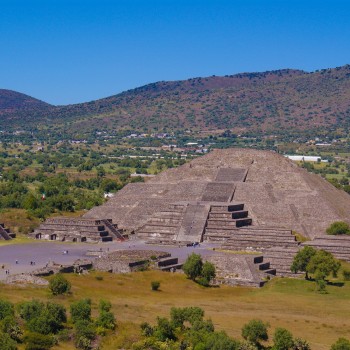
Pyramids of Teotihuacán
When to visit: March 12th to November 4th
The Pyramids of Teotihuacán are about an hour north of the city center but can be easily visited by public bus from the Northern Bus Terminal or by booking a tour that picks you up from your hotel in the downtown area. The pyramids are one of the only sights around Mexico City that are open 365 days a year, and it costs 75 pesos per person to enter.
The main path of this ancient city is known as The Avenue of the Dead. At one end, you’ll find the Pirámide de la Luna (Pyramid of the Moon), which stands 141ft. Visitors can climb roughly halfway up this pyramid for views over the valley. The larger of the pyramids, the Pirámide del Sol (Pyramid of the Sun), stands at 213ft, and you can climb to the top to get an insight into the scale of this kingdom when it was home to more than 100,000 people.
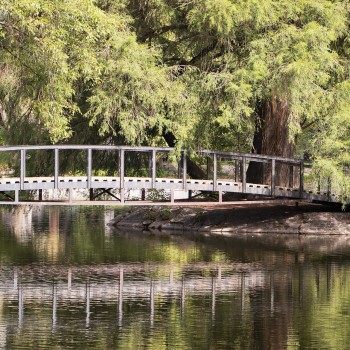
Chapultepec Park
When to visit: March and April
Chapultepec Park is the largest city park in the Western Hemisphere, and once inside, you'll discover a plethora of activities to keep you busy. The park is home to the National History Museum, which also happens inside the only castle in North America where actual royalty has lived.
Chapultepec is also home to the city's central zoo, free to enter, and the Papalote Museo del Niño (Children's Museum). Sunday is the park's big day, as vendors line the main paths and crowds of families come to picnic, navigate the lake on rowboats, and group into the museums. Tours in English (four daily except Sunday, 10:30 am to 5 pm; reservation recommended), which are very worthwhile to make sense of Mexico's complicated history.
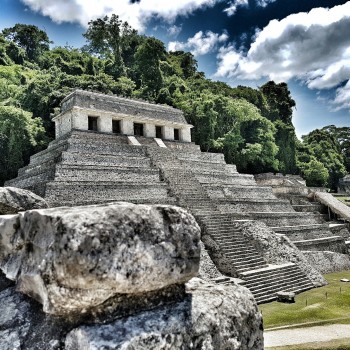
Palenque
When to visit: January 1st to February 18
Palenque, a magnificent specimen of the Mayan civilization, is a place full of mystery and history. It is the ruins of a Maya city that thrived during the 7th century and contains some of the most genius Mayan architectures and monuments with many mysterious sculpting and carvings.
For a long time, this ancient city was covered in jungle, and most of its areas are yet to be uncovered. It is a place of great interest for historians, archeologists, and tourists alike. Temple of the Count, Temple of the Inscriptions, and Temple of the Cross are just a few of the incredible architectures lying here. Very quickly, Palenque is one of the top tourist attractions in Mexico. Great Ballcourt, El Caracol, and Temple of the Warriors are other significant attractions. Many of these structures were used as astronomical observatories during ancient times and is precious ground for the astrologers
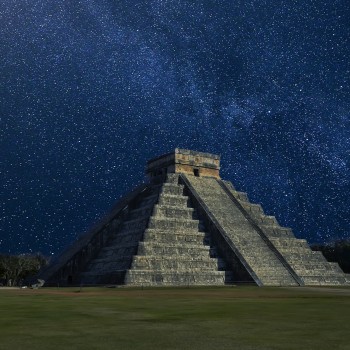
Chichen Itza
When to visit: November 12th to May 13th
One of the largest Maya cities located in Mexico, Chichen Itza in the Yucatan region is the most prominent one among all. With origins dating back to the 6th century, it is easily among the 3 most visited tourist attractions in Mexico, attracting over a million visitors each year. Here, the temple pyramid of El Castillo is one of the most exclusive archeological remains in the world. It is a four-faced Mayan Pyramid with a 91 step stairway on each face. Along with the top step, which makes a total of 365 steps, the exact number of days in a year.
The Great Ballcourt, El Caracol, and Temple of the Warriors are other significant attractions. Many of these structures were used as astronomical observatories during ancient times and is precious ground for the astrologers
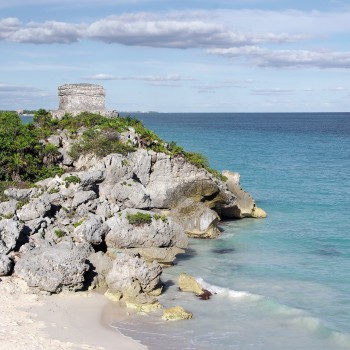
Tulum
Tulum is one of the last cities that the Mayan civilization left behind. During the 12th century, it was quite a busy seaport for the Mayans. Most of the structures of this former city on the east coast of Yucatán Peninsula stand on the rocky cliffs by the shore.
Although a great archeological site, today, it is more prominent for the tropical beaches. With a bit of touch of Mayan backdrop, these beaches offer the visitors exciting experiences. Temple of the Frescoes and the Temple of the Descending God are some of the popular attractions here.
.jpg)
Castillo de Chapultepec
Perched atop the Chapultepec Hill in Mexico City, the Castillo de Chapultepec is an incredible 18th-century colonial-era palace that bears witness to history both inside and out. Originally constructed in 1785, it was later become the home of Emperor Maximilian of Habsburg and many of Mexico’s presidents.
Today most of Chapultepec Castle is occupied by Mexico’s National History Museum, which charts the country’s diverse history, from the Pre-Hispanic era through to Spanish colonialism and Mexico’s independence. A remarkable complex and easily one of the best visitor attractions in Mexico City itself, you’ll be overwhelmed by both the magnificence of the building and the quality of the museum.

Playa del Carmen
Playa del Carmen has carved its Euro-chic niche along the Yucatán Peninsula. Sophisticated ex-pats and vacationing Europeans relax at the beachside lounges, upholding this small enclave's budding reputation as the place in Quintana Roo to see and be seen. The area's nerve center is El Zócalo, and similar to Mediterranean beachfront towns like Nice, the funky little public square is within walking distance of the beach.
Cancún is Mexico's vacation of the past – today's savvy beachgoers choose the cosmopolitan "Playa." La Quinta Avenida features several blocks worth of delicious eateries and quirky shops just off the square and running parallel with the shore. And with proximity to the ancient ruins of Tulum and expansive natural landscapes to explore (like Río Secreto, Xel-Há, and the underwater depths of the Caribbean Sea), Playa del Carmen caters to history buffs and outdoor enthusiasts alike. And, of course, Playa's swaths of white sand and brilliantly turquoise water impress even the most selective beach bums.
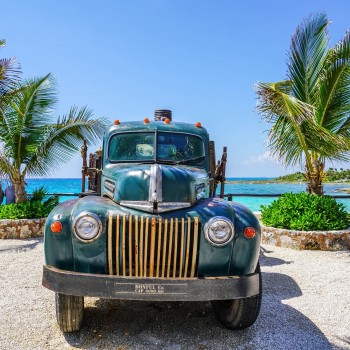
Cozumel
When to visit: March to June
Cozumel's clear turquoise waters and powdery sands coax travelers from cold winter climates to this roughly 185-square-mile island off the Yucatán Peninsula. Cruise ships are a constant feature of Cozumel's coastal views, and the atmosphere on this charming island is often interrupted by tourist chatter. Cozumel's charms are so compelling that the shopping plazas along the waterfront stay congested much of the year.
But crowds shouldn't deter you from discovering what this tiny Yucatán island has to offer, especially as Cozumel's natural allure is far away from the downtown area. You can hire a fishing or diving charter boat to discover the shallow reefs along the coast (this is arguably one of the best diving destinations in the world). Take a glass-bottom boat on tour around the island, or find a quiet beach where you can relax and do nothing. Once the cruise ships clear out, you should head down to a local bar for live music and the real skinny on this tiny island.
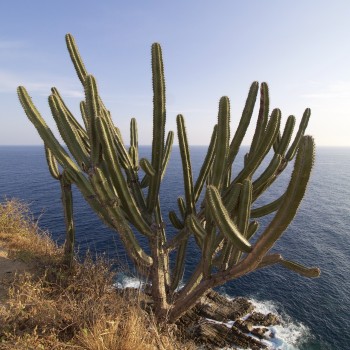
Huatulco
When to visit: February
Boasting nine bays and 36 beaches, Huatulco is a pristine town near Oaxaca that overlooks the Pacific Ocean. Visitor accommodations are upscale without being flashy, and protecting the environment is one of the town's top priorities.
As such, buildings cannot be taller than six stories, and much of the lush natural landscape remains untouched. Popular activities include snorkeling and ecological tours. If you'd rather take it easy, you can spend your days lounging on the beach and dining at the town's variety of seaside bars and restaurants.















